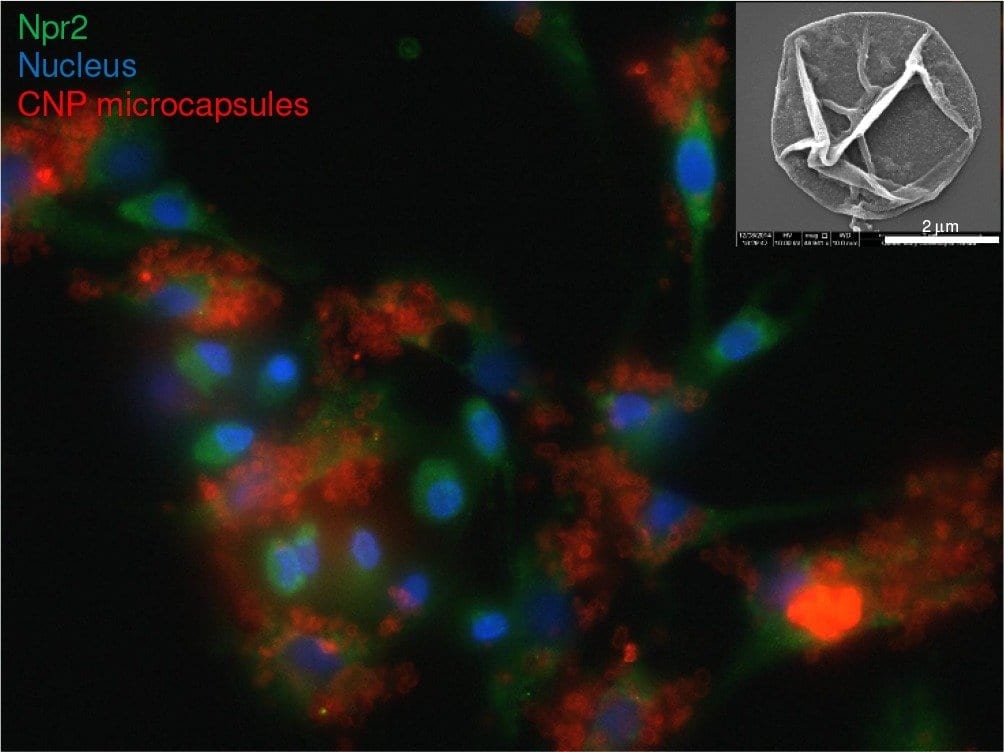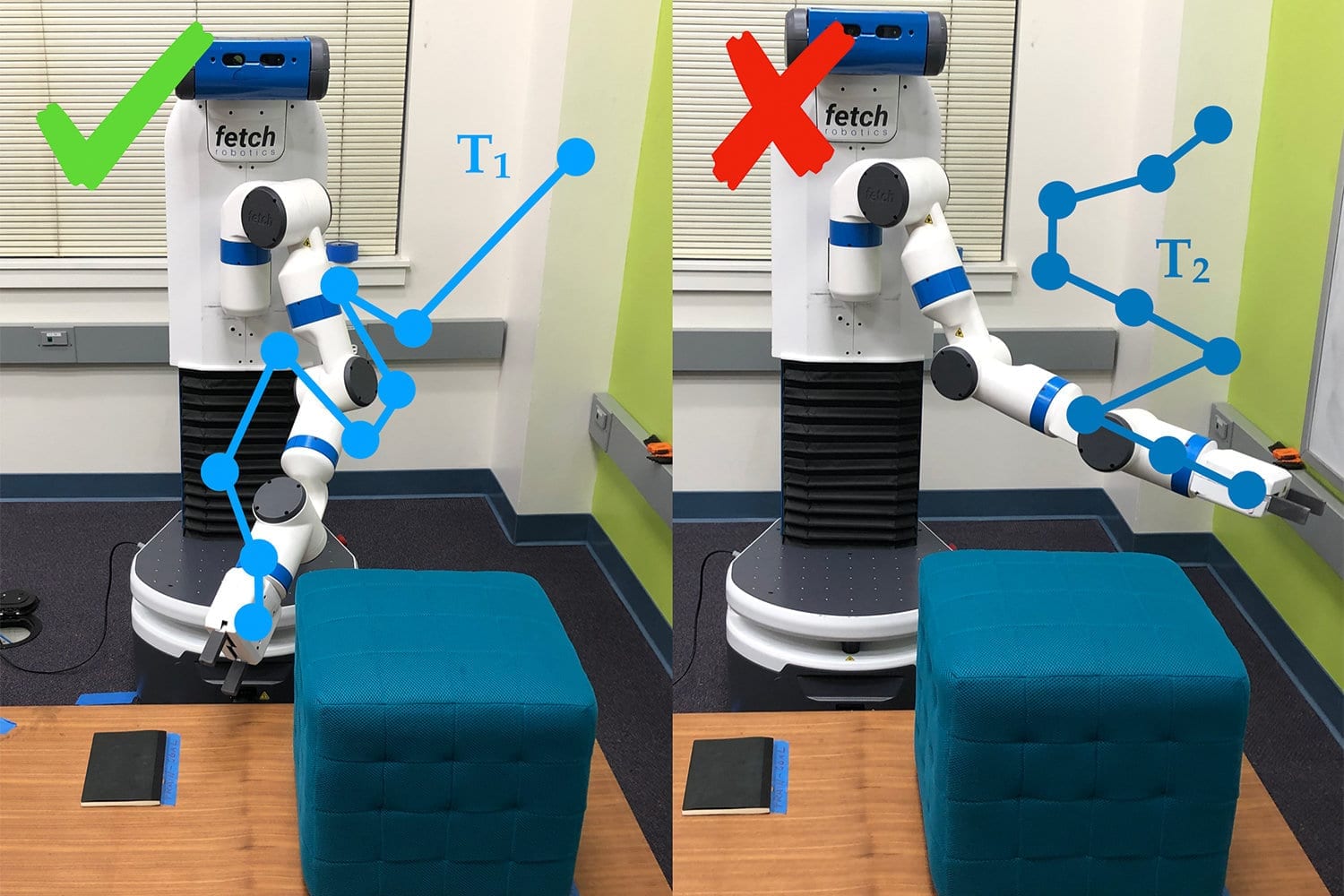
A new type of treatment for osteoarthritis, currently in canine clinical trials, shows promise for eventual use in humans.
The treatment, developed by Cornell biomedical engineers, is a synthetic version of a naturally occurring joint lubricant that binds to the surface of cartilage in joints and acts as a cushion during high-impact activities, such as running.
“When the production of that specific lubricant goes down, it creates higher contact between the surfaces of the joint and, over time, it leads to osteoarthritis,” said David Putnam, a professor in the College of Engineering with appointments in the Meinig School of Biomedical Engineering and the Smith School of Chemical and Biomolecular Engineering.
Putnam is senior author of “Boundary Mode Lubrication of Articular Cartilage With a Biomimetic Diblock Copolymer,” published June 4 in Proceedings of the National Academy of Sciences, USA. Zhexun Sun, a postdoctoral researcher in Putnam’s lab, is the paper’s first author.
The study focuses on a naturally occurring joint lubricant called lubricin, the production of which declines following traumatic injuries to a joint, such as a ligament tear in a knee.
The knee is lubricated in two ways – hydrodynamic mode and boundary mode.
Hydrodynamic mode lubrication occurs when the joint is moving fast and there isn’t a strong force pushing down on it. In this mode, joints are lubricated by compounds like hyaluronic acid (HA) that are thick and gooey, like car oil. There are numerous HA products on the market, approved by the Food and Drug Administration, for treating hydrodynamic mode lubrication disorders.
But HA is ineffective when strong forces are pushing down on the joint, such as those that occur during running or jumping. In these instances, thick gooey HA squirts out from between the cartilage surfaces, and boundary mode lubrication is necessary. Under these forces, lubricin binds to the surface of the cartilage. It contains sugars that hold on to water, to cushion hard forces on the knee.
In the paper, the researchers describe a synthetic polymer they developed that mimics the function of lubricin and is much easier to produce. “We are in clinical trials, with dogs that have osteoarthritis, with our collaborators at Cornell’s College of Veterinary Medicine,” Putnam said.
Those collaborators – Ursula Krotscheck and Kei Hayashi, both associate professors in the Section of Small Animal Surgery in the Department of Clinical Sciences – use a force plate to measure the efficacy of the treatments. The force plate quantifies the amount of force that a dog exerts with each paw, to measure whether they are favoring one paw over another.
“Once we finalize the efficacy study in dogs, we will be in a very good position to market the material for veterinary osteoarthritis treatment,” Putnam said. From there, the human market for a lubricin substitute should follow, just as HA has been made available for human use, mainly in knees.
Learn more: Synthetic joint lubricant holds promise for osteoarthritis
The Latest on: Osteoarthritis
[google_news title=”” keyword=”osteoarthritis” num_posts=”10″ blurb_length=”0″ show_thumb=”left”]
via Google News
The Latest on: Osteoarthritis
- New study sheds light on the debate surrounding two types of shoulder replacement surgery for osteoarthritison April 30, 2024 at 9:07 pm
A new study has provided valuable insights into the ongoing debate surrounding two types of shoulder replacement surgery: reverse total shoulder replacement and anatomical total shoulder replacement ...
- A Blood Test Can ID Knee Osteoarthritis Eight Years Before an X-Rayon April 30, 2024 at 8:38 am
In osteoarthritis, the tissues that cushion joints begin to degenerate, leading to stiffness, pain, and swelling. According to the World Health Organization, osteoarthritis affects over 500 million ...
- Knee Osteoarthritis Could Be Predicted Years In Advance By Blood Testson April 29, 2024 at 2:27 pm
A new study suggests a blood test may be able to detect the signs of knee osteoarthritis at least eight years before they appear on x-rays. Researchers analyzed the blood of 200 white British women, ...
- Blood test detects signs of osteoarthritis 8 years before X-rayon April 29, 2024 at 11:34 am
Researchers have created a new blood test that could lead to earlier intervention for those with osteoarthritis.
- Blood Test Might Predict Knee Osteoarthritis Years Earlyon April 29, 2024 at 3:44 am
MONDAY, April 29, 2024 (HealthDay News) -- A blood test could help doctors spot the signs of knee osteoarthritis at least eight years before it shows up on X-rays, a new study claims.
- Osteoarthritis, Osteoporosis and Osteopenia: What’s the Difference?on April 28, 2024 at 4:59 am
What's in a name? Well, if it's osteoporosis, osteopenia and osteoarthritis, for starters, a shared prefix. "Osteo" means bone, and that matching descriptor also spells confusion for many ...
- AI-powered test predicts knee osteoarthritis 8 years before X-rayon April 27, 2024 at 10:33 am
A new biomarker test successfully predicted the early onset of knee osteoarthritis years ahead of noticeable signs.
- Blood test finds knee osteoarthritis up to 8 years before it appears on X-rayson April 26, 2024 at 3:22 pm
Detecting knee osteoarthritis with a blood test up to eight years before it appears on X-rays -- as researchers have done -- could lead to therapies that delay disease progression and restore joint ...
- Blood test may be able to detect osteoarthritis 8 years earlier than X-rayon April 26, 2024 at 12:00 pm
A blood test could help predict knee osteoarthritis at least eight years before the signs of the disease show up on X-rays, a new study indicates.
- Blood test powered by AI could catch osteoarthritis 8 years earlier than X-ray, early data showon April 26, 2024 at 11:00 am
A new blood test could determine whether someone will develop knee osteoarthritis up to eight years before structural damage is picked up by an X-ray.
via Bing News










